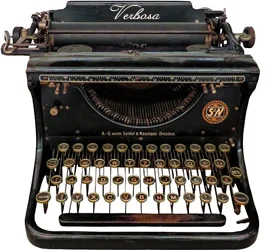In the realm of mental health interventions, there exists a remarkable procedure that has consistently demonstrated its efficacy: the Reconsolidation of Traumatic Memories (RTM). Originally known as “The Fast Phobia Cure” in the late 1970s, it has undergone various names over the years—such as “The NLP Trauma/Phobia Cure,” “The Rewind Procedure,” and “The Theater Procedure.” Regardless of nomenclature, its impact remains profound. It changed my life over 40 years ago:
https://clintmatheny.com/how-i-cured-my-ptsd/
A Cautionary Note
Before we delve deeper, a word of caution: do not use RTM for depression. However, when it comes to addressing traumatic flashbacks, simple phobias, and intrusive memories, RTM emerges as a potent solution.
Brian’s Story: A Ten-Year Follow-Up
This initial video interview is a ten-year follow-up with Bryan, an air traffic controller who exhibited all the symptoms of PTSD following a near collision between two jet airliners in 1989.
Back then I was a part-time psychotherapist and a full-time air traffic controller. Five years after this incident, I codeveloped the Federal Aviation Administration’s Critical Incident Stress Management Program for air traffic controllers.
Brian’s symptoms for 9 months were high blood pressure, visual flashbacks, feeling inadequate, and problems sleeping. After doing this 15 minute procedure, no follow up interventions were necessary. He passed his FAA physical with flying colors.
The RTM Procedure: A Guided Journey
Now, let’s explore the RTM procedure together. This procedure should first be used on a mildly unpleasant memory to test if the procedure works for you. I am going to guide you through the technique just as I did with Brian. Make sure you are in a safe place without distractions when listening to the audio.
Be sure to listen to both audios and follow the instructions by first working on a mildly unpleasant emotional feeling to test its effectiveness!
This 5 minute audio is for the mildly unpleasant event:
This 4 minute audio is for the trauma or phobia event:
I have used this procedure with more than 300 clients since 1984 with PTSD symptoms and with clients with a simple phobia.
My youngest client was 5 years old with a phobia response to thunderstorms and my oldest client was 93 years old. He couldn’t drink water; however, he could drink other liquids. He had a drowning experience in a river at age 6.
The procedure is effective over the telephone, in person, or virtually with clients with unspeakable horrendous experiences that they do not have to verbalize.
Veterans and PTSD: A Sobering Reality
“An annual report from VA also offers information about PTSD in Veterans using VA care. Of the 6 million Veterans served in fiscal year 2021, about 10 out of every 100 men (or 10%) and 19 out of every 100 women (or 19%) were diagnosed with PTSD.” So over 700,000 veterans have a PTSD disability rating!
This procedure has had many studies over the past 40+ years. It works! In the past I had wondered why the Veterans Administration had not used this modality with any of the over 700,000 military veterans receiving a PTSD disability rating. I have concluded that the “RTM” procedure might be too effective in curing PTSD!
This 5 minute video with five veterans giving positive feedback ten years ago on the RTM Procedure from the site below: Note: the therapists were not affiliated with the VA.
https://cwb811.wixsite.com/theroadbackptsd-new/the-road-back
Below are the links to numerous studies:
https://clintmatheny.cdn-pi.com/opinion-the-best-ptsd-treatment-youve-never-heard-of/
https://www.academia.edu/31128656/Reconsolidation_of_Traumatic_Memories_RTM_for_PTSD_a_case_series
clint77090(at)gmail.com

